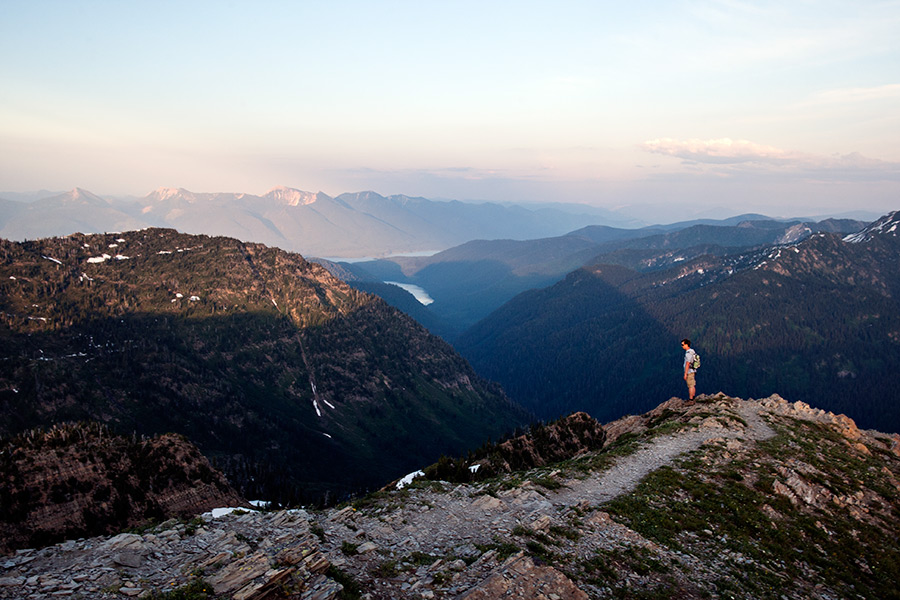When Going-to-the-Sun Road opens in earnest and visitors converge in droves on the nerve center of Glacier National Park, the effect is like that of a fire hose, flooding the main corridor with a tide of dense traffic and broadcasting visitors to the park’s most popular areas.
Some vehicles linger along the Sun Road for hours at a time before landing a parking space at Logan Pass Visitor Center, which regularly fills up before noon during the summer months, or they circle Avalanche Campground like sharks waiting to park.
Glacier officials acknowledge that the frenetic seasonal uptick may be the new norm for popular outdoor attractions like Glacier, which in 2015 set an annual record for the second year in a row, ranking 10th in terms of top visitation among all national parks.
Jeff Mow, superintendent at Glacier Park, is preparing for another potential record-breaking influx over the next few months. Mow said it doesn’t require a stretch of the imagination to expect overall attendance to increase 20 percent this year, which would be an unprecedented spike.
Visitation will likely be buoyed by this summer’s significant milestone – the centennial anniversary of the National Park Service.
And while Mow said Glacier would observe the occasion, he’s not handing out party hats.
Instead, Mow is looking toward the next century of park preservation, and recently told attendees of a Whitefish Chamber of Commerce luncheon that, although it took a century for Glacier to welcome its first 100 million visitors through the gates, he expects the next 100 million visitors will arrive in just 30 years.
The park is collaborating with gateway communities, local organizations and the neighboring national forests to encourage park visitors to explore other parts of the region.
For our summer preview, we’ve highlighted some off-the-beaten-path treasures to slake your thirst for summer adventure while easing the pressure off Glacier and avoiding the congestion.
The North Fork
The 35-mile stretch of sometimes jarring, sometimes dirt road that leads from Columbia Falls and tracks along the western edge of Glacier National Park should be driven with respect, but visitors who brave the journey to this remote corner of the park will not regret it.
Named for the North Fork of the Flathead River that borders the park, this is one of the least crowded and most remote sections of Glacier.
Those who make the trek are rewarded with peak-studded views of Bowman and Kintla lakes, a homesteading site, evidence of fire ecology – a series of wildfires over the decades have etched the mountain-scape with a mix of forest growth – and the opportunity to see and hear rarefied wildlife like wolves.
Visitors accustomed to modern comforts should be warned that few services exist up the North Fork, and cell phones stop chirping as the pavement turns to wash-boarded dirt.
Self-reliant visitors will appreciate the dearth of amenities, as well as the thin crowds.
Allow a full day to drive to and from Kintla and Bowman Lakes, and be sure to kick around the historic homesteading outpost of Polebridge, where a vibrant mercantile, bakery and saloon are open for business.
Flathead National Forest
Whatever your interests, budget or available time, there is an adventure awaiting you on the 2.4 million acres of Flathead National Forest.
Whether you prefer the solitude of hiking in the wilderness or the camaraderie found at popular boating and picnic areas, the Flathead National Forest offers a multitude of recreation opportunities for all comers.
Three of the forest’s ranger districts are easy to access from the Columbia Falls and Hungry Horse areas. The Glacier View Ranger District is home to the rustic North Fork area, described above.
Located near the western boundary of Glacier National Park and northeast of Flathead Lake, the Hungry Horse Ranger District contains the Hungry Horse Dam and Reservoir, which is a popular recreation site and important nesting habitat for bald eagles. The Spotted Bear Ranger District contains the Spotted Bear River, Great Bear and Bob Marshall wildernesses, and the South Fork of the Flathead River.
Between these three distinct areas there are more than 20 camping areas, seven cabin rentals and one lookout rental, which all provide varied accommodations and access.
Climb Great Northern
The monarch of the Great Bear Wilderness and one of the most prominent peaks in Northwest Montana, Great Northern Mountain is a worthy gem to add to the bucket list.
It is a rugged and remote hike, but arriving at the summit, elevation 8,700 feet, offers untold rewards.
Near Hungry Horse Reservoir, the most common route follows the north side of Hungry Horse Creek. The route begins with a steep pitch and most of the climb is Class 2, meaning it includes off-trail hiking but little exposure.
The Sun Road on a Full Moon
Cycling Glacier National Park’s iconic Going-to-the-Sun Road is the most memorable way to experience the area’s sweeping panoramas, but doing it under the lambent glow of a full moon provides a unique twist, and significantly pares back congestion.
Referred to by locals as the Park Side of the Moon, these rides to Logan Pass have been a popular way to experience the park in the dark since the 1970s, with the peak-studded mountain-scape cast against the moonlit mantel in ghost-like silhouettes.
The National Park Service requires nightriders to equip their whips with front and rear lights and wear helmets. A jacket and dry clothes are necessary gear for the chilly ride down.
Begin your ride either from Avalanche Creek, or truncate the ride by starting at The Loop. This summer, there are full moons June 20, July 19, Aug. 18, Sept. 16, and Oct. 16.
